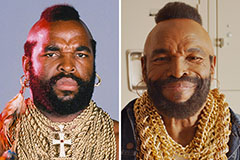Widened Coverage, Same Top-Quality
Renowned for its dedication to excellence, MyCigarsASAP.com supplies an exclusive assortment of premium cigars from some of the most reputable brands in the industry. By broadening its reach to West Hollywood, the company still provides swift access to a diverse selection of luxury cigars, upholding the same high standards of quality control that have earned it a trusted reputation among cigar enthusiasts.
Cigar Delivery West Hollywood
CALL (800) 654-7959
Customers in West Hollywood can select from famous brands including: • Arturo Fuente – Featuring a extensive selection of finely handmade cigars. • Montecristo – Renowned for its mellow, consistent mixtures that suit multiple flavor preferences. • Cohiba – Recognized globally for delivering a robust, strong smoking experience. • Davidoff – A standard of refinement, presenting cigars of unmatched uniformity and excellence. • My Father's Cigars – Delivering strong, deep flavors that take cues from Cuban cigar legacy. • Ashton – Famous for its mellow, sophisticated taste, produced from the highest quality tobaccos from the Dominican Republic. • Padron – Famous for its hearty tastes and exemplary craftsmanship, including the esteemed 1964 Anniversary Series. • Romeo y Julieta – A staple choice esteemed for its even tastes and uniform quality.
This wide assortment makes certain that MyCigarsASAP.com fulfills a broad spectrum of desires, with cigars originating from celebrated regions such as Nicaragua, the Dominican Republic, and Honduras.
Emphasis on Freshness and Quality
Grade is at the center of MyCigarsASAP.com’s business. To guarantee each cigar reaches perfect condition, the company adopts strict quality control standards, including humidity-controlled storage and handpicked inventory. Every request is attended to meticulously, assuring that the cigars are delivered fresh and full of flavor. Besides, their crew of cigar aficionados is on standby to give tailored recommendations, providing a personalized and informative experience to every customer.
Quick and Easy Delivery to West Hollywood
Through this latest increase in service, MyCigarsASAP.com solidifies its position as one of the fastest premium cigar delivery services in the region. Whether for a impromptu gathering, a prearranged event, or a easygoing evening, clients in West Hollywood can now benefit from prompt cigar deliveries within 30 to 60 minutes of placing their order. This fast service brings a heightened convenience to West Hollywood’s cigar lovers.
Cigar Delivery West Hollywood
CALL (800) 654-7959
About MyCigarsASAP.com
MyCigarsASAP.com is a LA-based cigar delivery service devoted to offering quick, reliable access to a luxury assortment of cigars. With a priority on quality, freshness, and personalized service, the company has gained recognition as a trustworthy supplier for cigar fans across the area. Now, with broadened service to West Hollywood, MyCigarsASAP.com sustains its position in delivering superior cigars rapidly and meticulously.
For more information or to order now for quick delivery, call (800) 654-7959.
Cigar Commencement and Past: A Expedition Through Periods
Cigars, often aligned with luxury, convention, and workmanship, possess a profound legacy stretching generations. The progression of cigars represents the intersection of societies, adventure, and mercantile dealings. This discourse studies the fascinating beginnings and history of cigars, tracing their journey from local rites in the Americas to developing into a planetary sign of class.
The Primitive Start: Cigars in Pre-Columbian Cultures Cigars have their primitive genesis in the tribal communities of the Americas. Prehistoric cultures, including the Mayans, Aztecs, and Taínos, are recognized to have partaken of coiled tobacco greens. Anthropological remains display depictions of Mayans consuming on clay artifacts going back to minimum the 10th century. The name “cigar” probably stems from the Mayan designation “sikar,” which means to smoke.
In these primitive societies, tobacco was not only a enjoyable product but also held spiritual significance. Spiritual leaders and tribal leaders consumed tobacco during holy rituals, feeling it allowed them to converse with the invisible world. Tobacco was also used as medicine, offering relief for various illnesses, such as pains and intestinal issues.
Tobacco’s Inception to Europe: Columbus and the New World The European heritage of cigars began with Christopher Columbus’s arrival in the Americas in 1492. His crew met native people using wraps of cured tobacco plants, an strange practice that interested them. Columbus and his men carried examples back to Spain, marking the onset of Europe’s connection with tobacco.
The practice of using quickly grew across Europe. Spaniards embraced it first, and by the 16th century, tobacco use turned into popular among European elites. Early cigars were primitive next to modern versions, but their fascination expanded to Italy, Portugal, and France. Tobacco was also viewed as a panacea, considered to heal a host of disorders from chills to tiredness.
Cuban Influence: Birthplace of the Modern Cigar Cuba’s role in cigar chronicle is essential, changing tobacco from a indigenous commodity into a planetary phenomenon. In the 17th century, Cuba evolved into the epicenter of cigar fabrication due to its optimal climate and fertile soil, particularly in the Vuelta Abajo region. Cuban cigars quickly achieved a renown for unparalleled quality and workmanship.
By the 1800s, the Cuban cigar industry was flourishing, and the term “Havana cigar” transformed into synonymous with excellence. Expert artisans, known as torcedores, fashioned cigars by hand, honing techniques that prevail largely unchanged today. Many of the world’s most well-known cigar brands, such as Montecristo, Cohiba, and Romeo y Julieta, ascribe their beginnings to this era.
The Enlargement to North America and Europe The desire for cigar s escalated beyond Cuba’s borders by the 18th and 19th centuries. Tobacco plantations started surfacing in other Caribbean islands, such as the Dominican Republic and Jamaica, as well as parts of Central America, including Honduras and Nicaragua. These regions continue to be cigar leaders today, each injecting individual characteristics to their products.
In Europe, Spain and the Netherlands developed into prominent consumers and producers of cigars. The Dutch founded a vigorous cigar industry, importing Cuban tobacco and blending it with native leaves to form singular styles. Meanwhile, cigar consumption in the United States turned into aligned with status and masculinity. The rise of industrialization saw cigar factories increase across the U.S., particularly in Florida, where Cuban immigrants introduced their skill and traditions.
Cigars and Social Status: From Aristocracy to the Everyday Man Throughout legacy, cigars have been closely aligned to status, wealth, and celebration. By the 19th century, cigars were a essential among European and American aristocrats. Monarchs such as King Edward VII of England were well-known cigar enthusiasts, further increasing their popularity among the elite.
In the United States, cigars became connected to political power and business success. Industrial magnates like Andrew Carnegie and John D. Rockefeller were often depicted consuming cigars, confirming their image as emblems of wealth. Prominent figures such as Winston Churchill famously espoused cigars, supplementing to their prestige.
However, cigars were not confined to the upper class. The growth of the cigar industry led to the fabrication of budget-friendly options, making cigars within reach to the working class. Cigar clubs and lounges surfaced, offering locations where people from all walks of life could appreciate a smoke.
The Cuban Embargo and the Rise of New Markets The Cuban cigar industry experienced a major transition in 1962 when the U.S. government, under President John F. Kennedy, implemented a trade embargo on Cuba. Cuban cigars, previously a fixture among American cigar connoisseurs, became illegal in the U.S., creating both shortage and mystique around them. As a result, many Cuban cigar makers fled to neighboring countries like the Dominican Republic, Nicaragua, and Honduras, where they continued their profession using Cuban-seed tobacco.
This geopolitical upheaval established new markets and led to the rise of premium cigars outside Cuba. Today, cigars from these regions are renowned for their quality, rivaling Cuban cigars in flavor, construction, and diversity.
Cigars in Popular Culture and Cinema Cigars have reinforced their place in popular culture, often embodying power, victory, and sophistication. Hollywood accepted the cigar as an icon, featuring it prominently in films. Characters like Tony Montana in Scarface and Winston Churchill in The Darkest Hour perpetuate the tie between cigars and authority.
Moreover, cigars are a standard at celebrations, marking occasions such as weddings, business deals, and the birth of children. Cigar lounges and clubs continue to serve as gathering spots for socializing and networking, reinforcing their cultural relevance.
The Modern Cigar Renaissance The late 20th and early 21st centuries have noted a renewal of cigar culture. The 1990s “Cigar Boom” in the U.S. saw a rekindled interest in premium cigars, with new lovers joining the scene. Artistry, diversity in blends, and custom techniques have fueled the modern cigar renaissance.
Independent cigar brands have obtained popularity, offering unique blends that entice to a growing demographic of younger smokers. Additionally, the rise of cigar lounges and online cigar shops has made it less difficult for consumers to discover different varieties from around the world. Events like Cigar Aficionado’s Big Smoke further reveal the lasting charm of cigars in contemporary culture.
Cigars and Sustainability: The Future of the Industry As the cigar industry evolves, sustainability has become a emphasis. Environmental factors, including climate change and deforestation, modify tobacco cultivation. Many cigar manufacturers are implementing eco-friendly practices by using sustainable farming methods and fostering reforestation efforts.
Fair labor practices are also becoming widespread, with companies providing fair wages and safe working conditions for the farmers and artisans involved in cigar production. The focus on sustainability strives to safeguard the industry’s legacy while serving the expectations of socially conscious consumers.
Conclusion: A Legacy of Tradition and Craftsmanship From the holy traditions of indigenous tribes to the plush lounges of today, cigars have traveled a long and historic path. Each drag of a premium cigar encapsulates with it the legacy of generations of craftsmanship, tradition, and cultural significance. Whether savored by royalty, industrial tycoons, or modern-day connoisseurs, cigars continue to signify more than just tobacco—they encapsulate a lifestyle, a celebration, and a tie to history.
As the world of cigars progresses, one thing endures constant: the draw of sitting back, lighting up, and savoring the skillful combination of tradition and innovation enveloped in each leaf.
The Cigar Production Procedure: A Voyage from Past to Contemporary Era
One Cigar Manufacturing Process: The Journey from Past to Present
Introduction
Such a cigar, one particular timeless symbol of extravagance and polish, has the rich history that bridges centuries and continents. From its early origins among local peoples to its modern incarnation as its own global industry, the process of crafting a cigar is an blend of craft, technology, and tradition. This article delves into the intricate journey of cigar manufacturing, comparing the methods of the past with those of today, and spotlighting how innovation and heritage blend in this absorbing craft.
I. Historical Overview of Cigar Manufacturing
A. Early Origins of Cigars
The history of cigars stems to the indigenous peoples of the Caribbean and Mesoamerica, who produced tobacco and used it in religious and medicinal practices. When Christopher Columbus arrived in the New World in 1492, he and his crew noticed the native Taíno people of Cuba and Hispaniola crafting and smoking dried tobacco leaves. This practice attracted the Europeans, who exported tobacco back to the Old World, where it quickly received popularity.
B. Traditional Cigar-Making Techniques
1. Tobacco Cultivation
In the early days, tobacco cultivation was the manual and labor-intensive process. Farmers used natural cycles and traditional knowledge to grow tobacco plants. The seeds were seeded by hand, and the plants required meticulous care to thrive.
2. Leaf Selection and Fermentation
After harvesting, the tobacco leaves were subjected to a natural air-curing process. They were draped in curing barns to dry slowly, allowing the chlorophyll to break down and the leaves to obtain their characteristic brown color. Fermentation subsequently occurred, where the leaves were placed in piles called pilones. The natural heat generated by microbial activity diminished harshness and brought out the rich flavors.
3. Rolling Methods
Cigar rolling was an craft transferred through generations. Skilled artisans, known as torcedores, shaped cigars entirely by hand. They selected filler leaves, attached them with a binder leaf, and enveloped the bunch with a high-quality wrapper leaf. This meticulous process needed precision and an eye for quality.
C. The Role of Cuban Cigar Tradition
Cuba became equivalent with premium cigars due to its ideal climate and soil conditions, particularly in the Vuelta Abajo region. The country's cigar-making techniques created the standard for quality and craftsmanship. Cuban cigars were in high demand, and the methods developed there guided cigar production worldwide.
II. Modern Cigar Manufacturing Process
A. Advances in Tobacco Cultivation
1. Genetic Selection
Modern agriculture has implemented genetic selection to augment tobacco plant qualities. Scientists and farmers collaborate to develop tobacco strains resistant to diseases and pests, and with desired flavor profiles. This produces more consistent and high-quality crops.
2. Modern Farming Techniques
Today, tobacco farming applies advanced irrigation systems, soil management, and crop rotation to maximize yield and quality. Precision agriculture technologies, such as GPS mapping and drones, help monitor plant health and optimize resource use.
B. Leaf Processing Today
1. Fermentation Methods
While the fundamental principles of fermentation continue, modern facilities oversee temperature and humidity with greater precision. This control ensures uniformity and improves flavor development. Some producers implement multiple fermentation cycles to refine the tobacco further.
2. Aging and Storage
Post-fermentation aging has turned into a critical step. Tobacco leaves are aged in controlled environments, sometimes for several years, to mellow the tobacco and improve complexity. Aging rooms are equipped with technology to copyright ideal conditions.
C. Contemporary Cigar Rolling
1. Machine-Made vs. Hand-Rolled Cigars
The 20th century introduced mechanization to cigar production. Machine-made cigars employ homogenized tobacco leaf (HTL) binders and wrappers, permitting mass production at lower costs. However, have a peek at these guys premium cigars last to be hand-rolled, maintaining the artisanal tradition.
2. Quality Control
Modern factories adopt strict quality control measures. This includes regular inspections, draw testing to assure proper airflow, and sensory evaluations. Technology enhances but does not replace the expertise of seasoned inspectors.
D. Innovations in Packaging and Distribution
Advancements in packaging materials protect cigars from environmental factors during shipping. Vacuum-sealed packaging, humidification devices, and sophisticated distribution logistics guarantee cigars reach consumers in optimal condition.
III. Comparing Past and Present Methods
A. Technological Advances
Technology has optimized many aspects of cigar manufacturing without undermining the importance of skilled labor. Mechanization deals with repetitive tasks, while artisans zero in on quality and craftsmanship.
B. Maintaining Tradition in a Modern Industry
Despite technological progress, the essence of cigar-making endures rooted in tradition. Many producers focus on hand-rolled methods and traditional fermentation to copyright authenticity and satisfy aficionados who treasure heritage.
C. Challenges and Opportunities
The industry grapples with challenges like regulatory changes, health concerns, and market fluctuations. However, opportunities appear from expanding global markets, premiumization trends, and consumer interest in artisanal products.
IV. The Art of Cigar Making: Preserving Craftsmanship
A. The Role of the Torcedor (Cigar Roller)
Torcedores are revered figures in cigar factories. Their expertise influences the cigar's construction and performance. Training to become a master roller can take years, illustrating the complexity of the craft.
B. Apprenticeship and Skills Transfer
Many factories manage apprenticeship programs to transfer skills to new generations. This ensures the survival of traditional techniques and protects high standards my review here in production.
C. Cultural Significance
Cigar-making is more than an business; it's a cultural heritage in regions like Cuba, the Dominican Republic, and Nicaragua. Festivals, museums, and tours celebrate this legacy, inviting enthusiasts worldwide.
The cigar manufacturing process is an captivating blend of time-honored traditions and modern innovations. While technology has brought in efficiencies and consistency, the heart of cigar-making resides in the hands of skilled artisans who carry forward a legacy that spans centuries. Understanding this journey augments the appreciation of cigars, not just as products but as representations of cultural heritage and craftsmanship.
 Mr. T Then & Now!
Mr. T Then & Now! Danny Pintauro Then & Now!
Danny Pintauro Then & Now! Elin Nordegren Then & Now!
Elin Nordegren Then & Now! Elisabeth Shue Then & Now!
Elisabeth Shue Then & Now! Bo Derek Then & Now!
Bo Derek Then & Now!